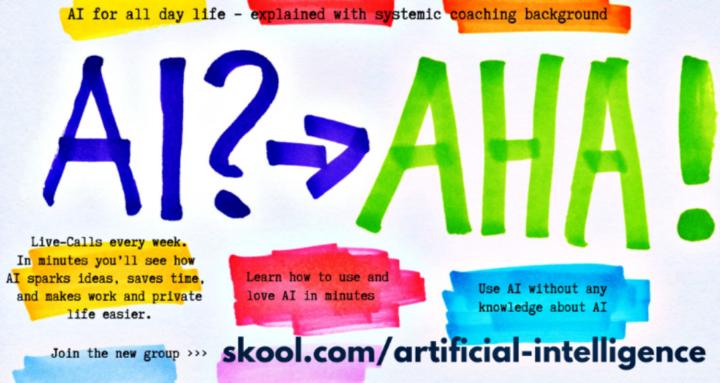4d (edited) • Human in the Loop / HITL 👥
Human-Centered AI: Executive Playbook
Human-Centered AI – Executive Playbook
Thesis: AI's economic potential is large; realized value depends on implementation philosophy. Systems that augment people deliver measurable productivity improvements; designs that reduce people to fallback validators create predictable control and safety gaps. The operating model is human-centered: AI as instrument; people as accountable decision-makers.
Reference Pattern
Macro potential. Credible modeling puts AI's potential at ~$13T of additional global output by 2030 (McKinsey Global Institute, 2018).
Execution risk. Industry analysts forecast that >40% of "agentic AI" projects will be canceled by 2027 due to unclear value, governance, and integration complexity (Gartner prediction via Forbes — forecast, not fact).
Field evidence. Large-scale call-center deployments report ~14–15% productivity gains, with larger lifts for less-experienced workers — a strong augmentation signal (MIT/Stanford, 2023–2024).
Safety governance. U.S. regulators analyzed 13 fatal crashes involving Autopilot misuse and criticized insufficient driver-engagement controls, prompting a major recall and ongoing oversight (NHTSA primary documentation).
Implementation signals. • IBM later sold key Watson Health assets after years of underperformance (source) • Amazon retired its recruiting model after bias was revealed (Reuters) • Google Duplex added disclosure commitments after public backlash about impersonation (The Verge)
AI-Support for Humans — Design Principle 1
AI as Personal Assistant, Not Supervisor
- AI proposes; humans decide and remain accountable. Decision rights, sign-offs, liability remain with human roles.
- AI handles repetition; humans handle interpretation and trade-offs. Automate standardized tasks; reserve judgment for ambiguity.
- AI retains context; humans set objectives and boundaries. Use AI to surface history, constraints, precedents; humans define goals and limits.
- AI operates continuously; humans operate sustainably. Offload after-hours monitoring and preparation; protect human workload.
- AI outputs are advisory by default. Require explicit human acceptance for actions with material risk.
- AI interactions are inspectable. Log prompts, inputs, lineage, model versions, rationales for audit and learning.
- AI escalation paths are predefined. Route uncertainty, low confidence, or policy conflicts to named owners.
- AI confidence signals are visible. Show confidence, input coverage, and known limitations with each recommendation.
- AI fits systems of record. Capture outcomes, overrides, and learnings where teams already work.
- AI performance tracks human-relevant KPIs: cycle time; first-pass yield; error severity; rework; override rate.
Example (Marketing). AI generates campaign variants, compiles cross-channel performance, and drafts briefs. Brand owners review, select/adapt, record rationale in the system of record, and schedule A/B tests with predefined guardrails and rollback criteria.
AI-Support for Humans — Design Principle 2
Augment Creativity, Not Automate It
- AI as brainstorming partner to expand option sets.
- AI as skill amplifier to lower barriers in design, analysis, and coding (experts still review).
- AI as feedback accelerator for fast, low-risk iteration.
- AI as pattern finder; humans determine relevance and story.
Example (Design). Teams use generative tools to explore orders-of-magnitude more concepts; human selection, editing, and narrative alignment remain central.
AI-Support for Humans — Design Principle 3
Build Bridges, Not Silos
- Cross-functional intelligence: shared ontologies across Sales, Product, Support, Finance.
- Context persistence: capture and reuse institutional knowledge.
- Dependency alerts: automatic surfacing of cross-team impacts.
- Meeting enablement (consent-based): summarization, action extraction, and follow-up.
Example (Collaboration). An AI workspace tracks decisions and dependencies; when a change affects another team's constraints, stakeholders are notified with rationale and options.
AI-Support for Humans — Design Principle 4
Prevent Burnout Through Intelligence
- Eliminate low-value administrative work.
- Link tasks to outcomes to make contributions visible.
- Reduce cognitive load with automatic context assembly.
- Protect focus time via interruption management and batching.
Example (Operations). An "AI chief of staff" drafts briefs, compiles status, schedules deep-work blocks, and maps work items to OKRs.
Evidence cue. Technostress and burnout risks rise with poor rollout; aligning AI with workload reduction and employee control mitigates risk (MIT research).
AI-Support for Humans — Design Principle 5
Market Understanding = Human Insight × AI Scale
- Quantitative × qualitative: large-scale analysis with human sense-making.
- Predictive × intuitive: forecasts tempered by domain judgment.
- Global × local: macro patterns with cultural and regulatory context.
- Historical × emergent: learned trends with horizon scanning.
Example (Product/Strategy). AI monitors customer behavior, competitor moves, and market dynamics; product leads decide which signals merit experiments.
Are you planning to implement AI into your Human Resources and other organizational parts? Go to https://www.skool.com/artificialintelligence/about and book a call to see if your situation could be a fit to work together in the private AI Group.
0
0 comments

skool.com/artificial-intelligence
Artificial Intelligence (AI): Machine Learning, Deep Learning, Natural Language Processing NLP, Computer Vision, ANI, AGI, ASI, Human in the loop, SEO
Powered by



